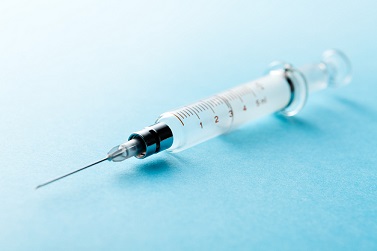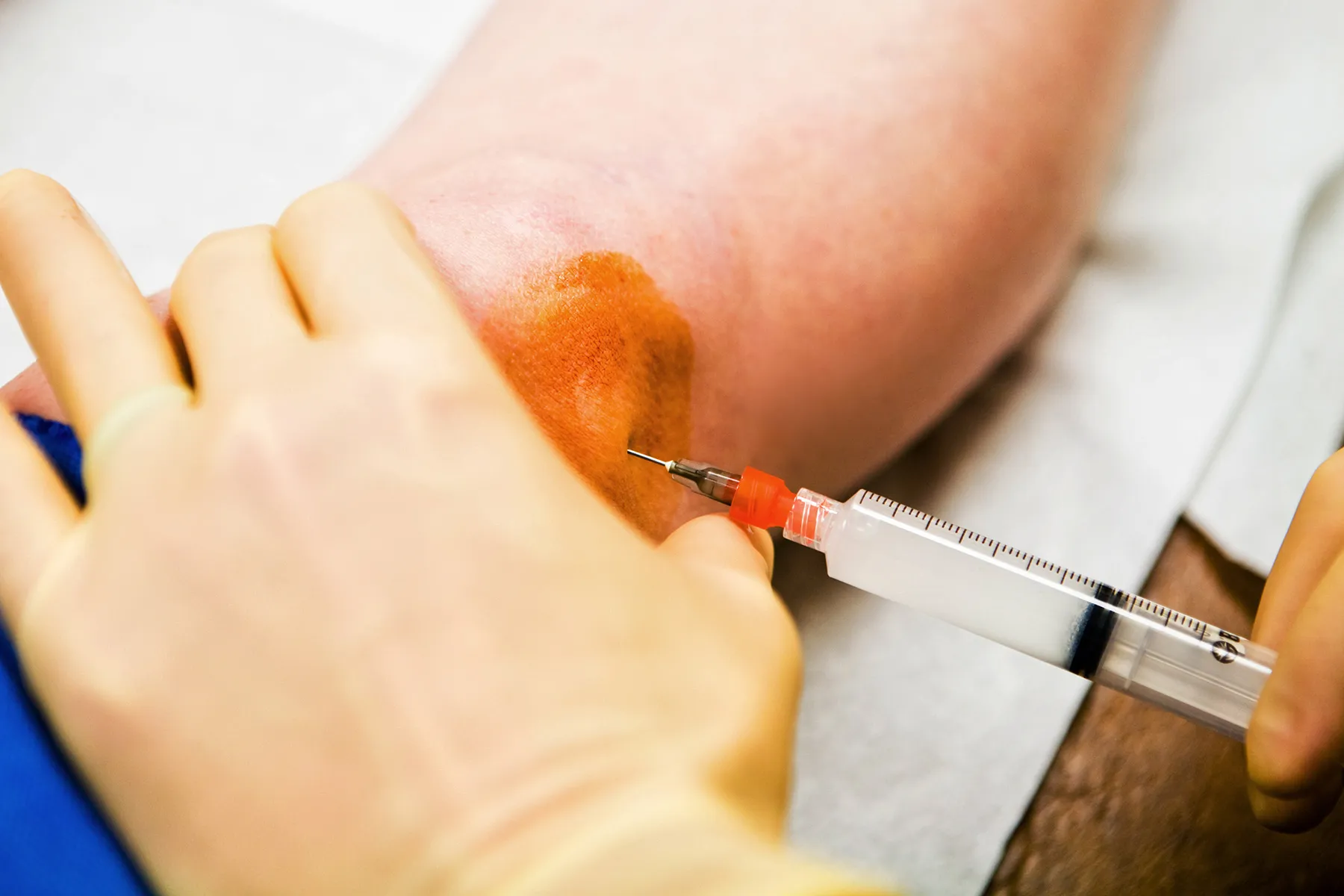Joint pain can be incredibly disruptive, affecting everyday activities and overall quality of life. Many people seek fast and effective relief, and one common treatment option is steroid injections—often known as cortisone shots. These injections are widely used to manage pain from conditions such as osteoarthritis, rheumatoid arthritis, bursitis, tendonitis, and even certain types of back pain. In this article, we’ll take an in-depth look at how steroid injections work, their benefits and drawbacks, and what to consider before opting for this treatment. By understanding both sides of the coin, you can have a more informed discussion with your healthcare provider about whether this treatment fits your needs.

How Do Steroid Injections Work?
Steroid injections involve the administration of a corticosteroid medication directly into the affected joint or area. Corticosteroids are synthetic drugs that mimic the natural hormones produced by your adrenal glands. Their primary role in this context is to reduce inflammation—a major contributor to pain and stiffness. For instance, when inflammation in a joint is curtailed, pain often subsides, and mobility may improve.
During the procedure, a healthcare professional cleans the injection site thoroughly. A local anesthetic may be applied to numb the area, minimizing discomfort as the needle is inserted. In many cases, imaging tools like ultrasound or fluoroscopy guide the placement of the needle to ensure the medication reaches precisely the spot where it’s needed most. The entire process typically takes only a few minutes, and patients can usually return home shortly afterward.
For a more detailed explanation of the procedure and its benefits, you can check out insights from the NHS and Mayo Clinic.
Rapid Pain Relief and Reduced Inflammation
One of the most attractive features of steroid injections is their ability to provide fast relief from pain and inflammation. Many patients experience a noticeable decrease in pain shortly after the injection, allowing them to engage in physical therapy or daily activities that were previously hindered by discomfort. Research and clinical observations have shown that the anti-inflammatory effects can lead to improved joint mobility, at least in the short term. This benefit is particularly valued in acute flare-ups of osteoarthritis and rheumatoid arthritis, where inflammation is the main culprit.
Targeted Treatment
Unlike oral medications that affect the entire body, steroid injections are localized. This means that the medication is delivered right where the inflammation is occurring, potentially reducing the overall dosage required and limiting systemic side effects. This targeted approach makes steroid injections an appealing option for managing localized pain. For more detailed benefits and patient experiences, check out what Arthritis NSW has to say about the pros of these injections.
Enhanced Functionality and Rehabilitation
By decreasing pain and inflammation, steroid injections can help patients regain functionality in their joints. This renewed mobility may allow individuals to participate more fully in rehabilitative exercises, stretching routines, or physical therapy sessions, which can contribute to long-term improvements in joint health. In cases of back pain, for example, injections can relieve nerve pressure and muscle tension, setting the stage for more effective physical therapy. Advanced Spine Center notes that targeted injections for back pain can help reduce discomfort, making it easier to return to normal activities.
Minimally Invasive and Convenient
The procedure for steroid injections is relatively simple and minimally invasive. Most patients can resume their daily routines soon after the injection, without the need for extensive downtime. This convenience is a significant factor for those who wish to avoid more invasive treatments like surgery, especially when dealing with chronic conditions. The ease and simplicity of the process, combined with the potential for rapid pain relief, explain why many turn to steroid injections as a first-line treatment after conservative measures such as oral medications or physiotherapy have failed.
The Drawbacks and Risks of Steroid Injections
While steroid injections offer undeniable benefits, they are not without risks. Being aware of these potential drawbacks is crucial for making an informed decision.
Temporary Relief
Perhaps the most significant downside is that the relief provided by steroid injections is often temporary. Many patients report that while the injection significantly reduces pain initially, the benefits may diminish within a few weeks or months. This transient effect means that injections are not a cure for the underlying joint issues. Instead, they serve as a short-term solution that may need to be repeated, depending on the patient’s condition.
Potential Joint Damage with Repeated Use
A growing body of research has raised concerns about the long-term effects of repeated steroid injections. Studies, such as a BU study, have indicated that multiple injections over time can accelerate joint deterioration, potentially causing cartilage damage and even leading to conditions like osteonecrosis (bone death) and subchondral insufficiency fractures. These adverse effects are particularly worrisome for individuals with osteoarthritis, where the joint cartilage is already compromised.
Side Effects and Systemic Risks
Even when administered correctly, steroid injections can have a range of side effects. Locally, patients may experience pain at the injection site, swelling, or skin thinning. Systemically, corticosteroids can influence other parts of the body. Some patients have reported side effects such as weight gain, mood changes, sleep disturbances, and even elevated blood sugar levels—especially in those with diabetes. Moreover, there is a risk that the injection could inadvertently cause damage to surrounding tissues, including tendons and ligaments. WebMD provides a comprehensive look at these potential complications.
Impact on Joint Health
A critical point of concern is the potential impact on overall joint health. Cortisone injections, when used excessively, may not only provide temporary relief but also lead to long-term joint damage. Repeated injections can weaken the joint structure, making it more susceptible to further injury and degeneration. This trade-off between short-term pain relief and long-term joint health is a major consideration for anyone weighing the benefits of steroid injections.
Risks in Specific Conditions
For certain patient populations—such as those with diabetes, high blood pressure, or other systemic health issues—the risks associated with steroid injections may be greater. It is essential for patients with these conditions to discuss their options thoroughly with their healthcare providers. Furthermore, imaging studies are often recommended before administering the injections to ensure that the joint is in a suitable condition for the treatment. Dignity Health emphasizes the importance of carefully evaluating the risks before proceeding with steroid injections.
Patient Considerations: Making the Right Choice
Deciding whether to undergo steroid injections is highly individual and depends on multiple factors. Here are some practical points to consider:
1. Comprehensive Evaluation
Before deciding on steroid injections, it’s important to have a thorough evaluation of the joint or affected area. This may include imaging studies such as X-rays, ultrasounds, or MRIs to assess the extent of joint damage or inflammation. A clear diagnosis helps determine if steroid injections are appropriate or if alternative treatments might be more effective in the long term.
2. Alternative Treatments
Steroid injections are just one option among many for managing joint pain. Alternative treatments include physical therapy, lifestyle modifications (such as weight loss and exercise), and other injection therapies like platelet-rich plasma (PRP) or hyaluronic acid (HA) injections. While these alternatives may not provide immediate relief like steroid injections, they often aim to address the root cause of the pain rather than merely masking the symptoms. For more insight into these alternatives, you can review information on Healthline.
3. Low-Dose vs. High-Dose Injections
Some specialists advocate for the use of low-dose steroid injections to minimize the risks associated with higher doses. For example, Naples Regenerative emphasizes that low-dose injections can provide sufficient anti-inflammatory benefits while reducing the likelihood of adverse effects such as tissue damage. This approach may be particularly beneficial for patients who require repeated treatments.
4. Timing and Frequency
The timing and frequency of steroid injections are crucial considerations. Most experts recommend spacing out injections to avoid the cumulative damage that can occur with repeated treatments. Typically, injections are administered only when conservative measures have failed, and there is a clear indication of acute inflammation. Your healthcare provider will help determine the safest schedule based on your individual condition and overall joint health.
5. Monitoring and Follow-Up
After receiving a steroid injection, monitoring the affected joint for any signs of adverse reactions is essential. Regular follow-up appointments allow your healthcare provider to assess the treatment’s effectiveness and decide whether further injections—or alternative therapies—are necessary. This ongoing evaluation is vital to ensure that the benefits of the injections outweigh the potential risks over time.
Steroid Injections in the Context of Back Pain
While much of the discussion around steroid injections centers on joint pain in the knees, hips, and shoulders, they are also commonly used for certain types of back pain. Epidural steroid injections, for instance, are a popular option for patients suffering from sciatica or herniated discs. These injections are administered into the epidural space around the spinal nerves to alleviate inflammation and relieve nerve compression.
Pros for Back Pain
For individuals with back pain, steroid injections can offer significant relief, sometimes reducing pain for several weeks to months. The localized nature of the injection means that the medication works right where it’s needed, providing targeted pain relief without affecting the entire body. This can be particularly advantageous when compared to systemic pain medications, which may have more widespread side effects. Norton Spine and Pain and Spine both discuss how epidural injections can help restore mobility and reduce discomfort in patients with chronic back issues.
Cons for Back Pain
However, the use of steroid injections for back pain is not without its challenges. Like other steroid injections, the pain relief is often temporary, and repeated injections carry similar risks of tissue damage. There is also the possibility of localized side effects, such as a flare in pain immediately after the injection, although these symptoms usually subside within a short period. Additionally, the effectiveness of these injections can vary from patient to patient, making it important to have realistic expectations about the outcome.
Comparing Steroid Injections with Other Treatment Options
When considering treatment options for joint pain, it’s helpful to compare steroid injections with other available therapies.
Steroid Injections vs. PRP and HA Injections
While steroid injections provide quick relief from inflammation, they do not promote healing of the damaged tissues. In contrast, treatments like PRP (platelet-rich plasma) therapy and hyaluronic acid (HA) injections aim to regenerate tissue or improve joint lubrication. Although these alternative treatments may take longer to show results, they are often considered more sustainable in terms of long-term joint health. Healthline offers a detailed comparison of these different injection therapies.
Integrating Injections into a Broader Treatment Plan
It is rarely advisable to rely solely on injections for managing joint pain. Instead, steroid injections should be viewed as one component of a comprehensive treatment plan. This plan might include physical therapy, weight management, exercise, and other lifestyle modifications that together help improve joint function and overall well-being. By addressing both the symptoms and the underlying causes of joint pain, patients are more likely to achieve lasting improvements.
Practical Tips for Patients Considering Steroid Injections
If you’re contemplating steroid injections as a treatment option, here are some practical tips to help you navigate the decision-making process:
- Consult Thoroughly:
Engage in an in-depth discussion with your healthcare provider about your symptoms, the severity of your joint pain, and any underlying conditions you may have. Make sure to ask about alternative treatments and the potential risks associated with repeated injections. - Ask About Imaging:
Request imaging studies—such as X-rays or ultrasounds—to get a clear picture of the joint’s condition before undergoing an injection. This helps ensure that the treatment is appropriate for your specific situation. - Consider Your Overall Health:
If you have conditions like diabetes, high blood pressure, or other chronic health issues, discuss how these might interact with the steroid treatment. Your provider may adjust the dosage or recommend alternative therapies based on your overall health. - Plan for Follow-Up:
Steroid injections require careful monitoring. Be sure to schedule follow-up appointments to assess how well the treatment is working and to determine if any adjustments are necessary. - Explore Combined Therapies:
Sometimes, a combination of therapies may be the best approach. For example, a steroid injection might be used to reduce pain quickly, followed by a regimen of physical therapy to strengthen the joint and prevent further deterioration.
Weighing the Pros and Cons
Ultimately, the decision to undergo steroid injections should be based on a careful weighing of the pros and cons. On one hand, these injections can offer rapid and targeted relief from joint pain, enabling you to resume daily activities and participate in rehabilitative exercises. On the other hand, they are not a permanent solution, and overuse can lead to serious complications, including accelerated joint degeneration.
It is essential to view steroid injections as a temporary measure rather than a cure-all. While they can significantly improve quality of life in the short term, long-term management of joint pain typically requires a multifaceted approach. This might involve lifestyle modifications, physical therapy, and in some cases, alternative injection therapies that promote healing rather than just reducing inflammation.
Making an Informed Decision
Before deciding on steroid injections, consider the following steps:
- Get a Comprehensive Diagnosis:
Ensure that you have a clear understanding of the cause of your joint pain. A proper diagnosis is crucial in determining whether steroid injections are the right choice for your condition. - Discuss All Options:
Talk with your healthcare provider about the full range of treatment options available. This includes not only steroid injections but also other therapies such as PRP, HA injections, and non-injection treatments like physical therapy and lifestyle changes. - Understand the Risks:
Ask about the potential short-term and long-term risks associated with steroid injections. Understanding these risks can help you make a more balanced decision about whether the benefits outweigh the drawbacks in your particular case. - Consider Your Treatment Goals:
Think about what you hope to achieve with treatment. If your goal is to get quick relief to allow you to participate in physical therapy, a steroid injection might be appropriate. However, if you are looking for a long-term solution to joint degeneration, you may need to explore other avenues. - Review the Evidence:
Familiarize yourself with the latest research and expert opinions on steroid injections. Studies from reputable sources like BU and insights from Dignity Health provide valuable information on both the effectiveness and potential risks of these treatments.
Sources:























